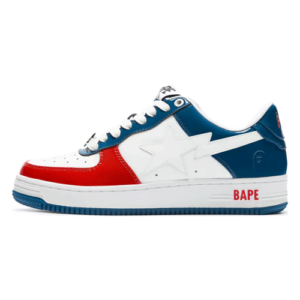Building a successful SaaS (Software as a Service) product is no easy feat. In fact, many SaaS startups struggle to navigate the complexities of the SaaS development lifecycle, and many fail to reach their full potential. Fortunately, with the right approach, you can avoid common pitfalls and set your product up for long-term success. This article explores key strategies for fail-proofing your SaaS development lifecycle while ensuring your product thrives in a competitive market.
1. Understanding the SaaS Development Lifecycle
The SaaS development lifecycle is a structured approach to building and maintaining a software-as-a-service product. It encompasses several stages, each crucial for delivering a successful product to your customers. From initial concept to post-launch improvements, understanding the full scope of the SaaS product development lifecycle is critical to success.
The stages typically include:
- Idea Validation: Ensuring there is a real need for your product.
- Planning and Design: Outlining the features, user interface, and technical architecture.
- Development: Building the product through coding and testing.
- Deployment: Launching your product to users.
- Post-Launch Maintenance: Continuously improving the product based on feedback and performance metrics.
Each of these stages requires careful planning, constant monitoring, and adapting to market demands. Without clear strategies, you risk delays, costly mistakes, and, ultimately, failure.
2. Embrace Agile SaaS Development
One of the best ways to fail-proof your SaaS development lifecycle is by adopting an agile SaaS development approach. Agile methodologies are designed to make software development more flexible, iterative, and responsive to change. In a world where customer needs and technologies evolve rapidly, agile SaaS helps you stay adaptable and avoid getting stuck with outdated solutions.
Agile focuses on delivering product iterations in short cycles called “sprints.” These sprints allow your team to test and validate features quickly, gather user feedback, and make adjustments in real time. This approach drastically reduces the risk of spending too much time on features that users don’t need, or even worse, launching a product that doesn’t meet expectations.
Key Benefits of Agile SaaS:
- Faster Time-to-Market: By focusing on smaller increments of work, you can deliver updates quickly.
- Flexibility: With continuous feedback, you can pivot or make changes to meet new demands.
- Customer-Centric Development: Agile ensures that your SaaS product evolves according to user needs and pain points.
3. Avoid the Scope Creep
One of the most common mistakes in the SaaS product development lifecycle is scope creep. This happens when new features or requests keep getting added without proper control, resulting in missed deadlines, overstretched resources, and a delayed launch.
While it’s tempting to keep adding new features, it’s critical to stick to your original goals. Focus on building a MVP (Minimum Viable Product) first. An MVP allows you to test the product in real-world conditions with a smaller set of core features. This approach ensures that you don’t waste time building unnecessary features and helps you focus on what’s truly valuable to your customers.
How to Avoid Scope Creep:
- Establish a clear product roadmap and communicate it to your team.
- Prioritize features based on customer feedback and market demand.
- Use agile SaaS methodologies to refine and build incrementally.
4. Incorporate Continuous Testing and Quality Assurance
Quality assurance (QA) is often neglected or rushed in the early stages of development, but it’s essential to ensure the longevity of your SaaS product. Continuous testing and feedback loops will save you from disastrous post-launch bugs and improve user experience.
Continuous testing involves testing code at every stage of development, ensuring that any issues are identified and fixed before they grow. Automated testing tools can help you test frequently and efficiently, reducing human error and ensuring your product is stable.
Best Practices for QA in SaaS Product Development Lifecycle:
- Unit Testing: Ensures that individual pieces of code are working as expected.
- Integration Testing: Confirms that different parts of the application work together.
- User Acceptance Testing (UAT): Ensures that the product meets end-user requirements.
5. Implement Robust Security Measures
Data security is critical in the SaaS development lifecycle, as customers are trusting you with their sensitive information. A data breach can cause irreparable damage to your reputation and result in financial loss.
To protect your product and users, ensure that your SaaS product development lifecycle incorporates robust security practices from day one. Regular security audits, encryption, and compliance with industry standards (such as GDPR) are essential. Additionally, agile SaaS teams can quickly address vulnerabilities as they arise.
Key Security Practices:
- Encrypt sensitive data both in transit and at rest.
- Implement strict authentication and authorization protocols.
- Regularly update and patch software to fix security vulnerabilities.
6. Monitor Key Metrics and Analytics
Once your SaaS product is live, it’s crucial to monitor key performance indicators (KPIs) to ensure it’s performing as expected. Metrics like customer acquisition cost (CAC), churn rate, lifetime value (LTV), and customer satisfaction are important for assessing the success of your SaaS product.
Using analytics tools, you can track how users are interacting with your product, identify areas for improvement, and make data-driven decisions. Regular monitoring helps avoid common pitfalls like building features no one uses, which can waste resources.
7. Focus on Scalability from the Start
A common mistake many developers make is neglecting scalability in the early stages of SaaS product development. Building for scalability ensures that your product can handle increasing demand as your user base grows, preventing costly infrastructure changes later.
Adopting a cloud-native architecture and leveraging scalable cloud providers can help your product handle large-scale traffic without compromising performance. Additionally, designing your code to scale in terms of both users and features will prevent your product from collapsing under pressure as it gains popularity.
Tips for Building Scalable SaaS Products:
- Use microservices to break your product into manageable, scalable units.
- Choose scalable cloud infrastructure and databases.
- Implement load balancing and caching to optimize performance.
8. Foster a Culture of Collaboration
The success of a SaaS product development lifecycle is not just about technical expertise but also about collaboration across teams. Encouraging communication between developers, product managers, designers, marketers, and support staff is essential to creating a product that resonates with users.
By using agile SaaS methodologies, teams can work together efficiently, sharing ideas and making decisions based on real-time feedback.
Conclusion
Fail-proofing your SaaS development lifecycle requires careful planning, flexibility, and a focus on both technical excellence and customer-centric design. By following the principles outlined above, you can avoid common pitfalls, scale your product effectively, and build a sustainable SaaS business that meets the needs of your users.
Key Takeaways:
- Embrace agile SaaS development to remain flexible.
- Avoid scope creep by focusing on an MVP.
- Prioritize quality assurance through continuous testing.
- Ensure data security and scalability from the start.
- Monitor KPIs and continuously improve based on user feedback.
By applying these strategies, you’ll set yourself up for long-term success and avoid the common mistakes that can lead to the failure of your SaaS product.







0 Comments